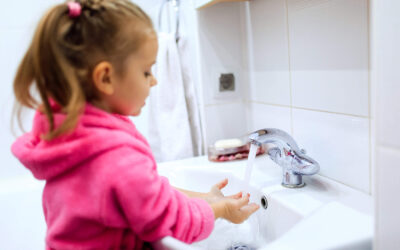What are Emotional Problems in Childhood?
Childhood is a journey of growth, and sometimes that path includes emotional challenges. These “emotional issues” reflect difficulties with a child’s feelings, self-esteem, or overall well-being, indicating struggles with mental health, wellness, or coping skills. These can emerge at any phase of life and may or may not lead to long-term distress.
Open conversations about emotions are incredibly beneficial for a child’s well-being, starting early and happening often. It’s important to remember that even with the best parenting, some children will still experience emotional difficulties. Sometimes, feelings can become overwhelming and significantly impact a child’s daily life.
A child’s abilities, behavior, and development all influence their emotional landscape. Symptoms like anxiety, withdrawal, irritability, depressive thoughts, and mood swings can have an “organic” origin, stemming from chemical differences in the brain. While all children experience some sadness and anxiety, intervention becomes crucial when these symptoms interfere with day-to-day functioning. The goal is to foster emotional wellness and equip children with coping strategies.
Understanding Emotional Struggles vs. Trauma
It’s important to differentiate between healthy emotional struggles and traumatic experiences. Emotional struggles, such as sadness from a lost game or anxiety about a test, are a normal and even necessary part of development. These “safe struggles” help children build resilience when they have supportive and nurturing adults to guide them through. Children learn problem-solving, emotional regulation, and coping mechanisms by navigating these challenges.
Trauma, on the other hand, involves experiences that pose a significant threat to a child’s safety or sense of self-worth. These can be “small ‘t’ traumas,” like significant family strife or a big school transition, or “big ‘T’ traumas,” such as witnessing violence or experiencing severe neglect. While both can cause emotional distress, trauma often requires specialized therapeutic approaches due to its profound impact on a child’s sense of safety and self. The key difference lies in the child’s capacity to integrate and process the experience with support; struggles can be worked through, while trauma often overwhelms a child’s coping resources.
Recognizing Emotional Distress in Your Child
Keep an eye out for these common indicators:
- A teenager who isolates themselves in their room.
- A child losing interest in previously enjoyed activities.
- A sudden drop in school performance.
- Extreme tantrums and persistent feelings of sadness and frustration.
- A teenager regularly expressing sentiments like “I hate my life.”
- Unusual and pervasive fears.
- Difficulty making or maintaining friendships.
If these symptoms are present more days than not, it’s wise to be concerned. There’s a difference between mild and more significant symptoms. Some children are genetically predisposed to higher levels of negative emotionality or sensitivity. These struggles can hinder relationships, daily happiness, and overall life success.
Understanding Common Emotional Challenges
Depression and anxiety are the most prevalent emotional challenges in children and teens.
- Depression: Characterized by a persistent low mood or a lack of pleasure in activities the child once enjoyed. In children and teens, irritability may be more obvious than a depressed mood. A diagnosis typically involves one of these core symptoms plus 4-6 other symptoms, such as restlessness, feelings of worthlessness or guilt, suicidal thoughts, or changes in sleep and appetite.
- Anxiety: Marked by excessive worry about various topics, experiences, or things on most days, interfering with daily functioning. Other symptoms include restlessness, avoidance behaviors driven by fear, changes in sleep or appetite, and attention difficulties. Specific anxiety presentations include phobias, separation anxiety, and social anxiety.
Researchers highlight a continuum between depression and anxiety. While some anxiety can be manageable and even motivating (e.g., “I’m worried about that math test!” leading to studying), unchecked anxiety can prevent a child from developing coping strategies, potentially leading to depressive symptoms. Anxiety and depression often co-exist, with depression adding feelings of helplessness and hopelessness that can diminish life enjoyment. Persistent irritability can also be a sign of depression in children. The good news is that these symptoms can improve with a combination of coping strategies, therapy, and sometimes, medical treatment.
What Causes Emotional Challenges?
- Neurobiological Factors: Low serotonin levels in the brain, often influenced by genetic predisposition, can contribute to depression.
- Traumatic Events: Loss, significant home changes, and traumatic experiences (both “small ‘t’ traumas” like family strife or school changes, and “big ‘T’ traumas” like domestic violence or sudden loss) can profoundly affect a child’s emotional well-being.
- Environmental Factors: Anxiety can be “contagious.” Being in unpredictable situations, surrounded by anxious individuals, or having a parent with very anxious reactions can increase a child’s anxiety. High-pressure environments in academics or sports can also contribute.
- Other Neurotypes or Challenges: Children with learning differences may find the classroom stressful. Children with an autistic neurotype may struggle with social interaction. These unique wiring styles and challenges can increase the likelihood of anxiety. Anxiety is often co-occurring with an autistic neurotype, learning challenges, and ADHD.
- Temperament and Genetics: A child’s inherent optimism or pessimism plays a significant role. As Dr. Seligman notes in The Optimistic Child, pessimism, an entrenched habit of mind, can lead to depressed mood, resignation, and underachievement. Helping children view negative events as changeable, specific, and behavioral (rather than permanent, global, or personality traits) can foster a more optimistic outlook.
Supporting Your Child’s Emotional Health
Here’s how you can help:
For Anxiety:
- Acknowledge your own worries: Share how you manage your own worries, emphasizing that mistakes happen and no one is perfect.
- Reassure and explain: Talk about how most worries don’t come true.
- Filter information: Avoid discussing adult worries that might overwhelm your child. Focus on positive community news and reinforce safety.
- Prioritize self-care: Addressing your own anxiety benefits your child’s well-being.
For Depression:
- Spend quality time together: Simple activities like reading, watching movies, or visiting a park can strengthen your bond.
- Make plans: Having something to anticipate, whether a party or a day trip, can build hope.
- Listen actively: When your child expresses negative feelings, validate them. Instead of dismissing, say, “I hear that you feel really awful right now. I’m here to help. Together we can try to make it better.”
- Encourage engagement: Guide your child back to activities they once enjoyed.
- Support identity formation: Help older children explore their interests, values, and who they are through creative outlets or new experiences.
- Build healthier habits: Patiently work on consistent eating, sleeping, exercise, and social routines to foster resilience.
- Seek professional help: If symptoms are significant, a cognitive behavioral therapist (CBT) can be highly effective. CBT helps children identify and challenge negative thought patterns.
- Be vigilant for suicidal thoughts: If your child talks about death or dying, seek immediate help (call 911 or visit an emergency room, or call the National Suicide Prevention Lifeline at 1-800-273-8255).
- Do NOT ignore warning signs: Withdrawal, giving away possessions, or statements like “I won’t be there tomorrow” are serious. Membership in marginalized groups can also increase risk.
- Do NOT lose hope: Consistent support from even one person can be a powerful resilience factor.
- Do NOT allow access to lethal means: Secure all weapons and unsafe items in your home.
When to Seek Professional Help
If your efforts aren’t yielding results, don’t hesitate to seek professional support. A cognitive behavioral therapist can help your child develop emotional awareness, coping skills, and challenge negative thoughts. They’ll create a treatment plan, teaching relaxation techniques and practical strategies. Your involvement in practicing these skills at home is key.
If you have immediate concerns about your child’s safety or a plan for self-harm, call 911 or visit the nearest emergency room.
Professional Resources for Emotional Challenges
Mental health professionals can provide clarity on symptoms and causes.
- Cognitive Behavioral Therapist or Play Therapist: To treat anxiety or depression using age-appropriate approaches.
- Consultation with a Psychologist or Neuropsychologist: For a comprehensive assessment to rule out other co-occurring conditions that often present in childhood and teen years.
- School Psychologist: Can offer support within the school setting, facilitate social groups, and help adjust the environment to reduce anxiety.
- Child Psychiatrist: To consider medication if recommended by a therapist, and to provide general health consultation.
Resources for Emotional Challenges in Childhood
- Beck Institute: www.beckinstitute.org
- Beck, Judith S., & Beck, Aaron T. (1995). Cognitive Behavior Therapy: Second Edition, Basics and Beyond.
- Bender, Janet M. (2004). Tyler Tames the Testing Tiger.
- Cook, Julia. (2012). Wilma Jean and the Worry Machine.
- Cook, Julia. (2012). Wilma Jean and the Worry Machine: Activity and Idea Book.
- Culbert, Timothy & Kajander, Rebecca




